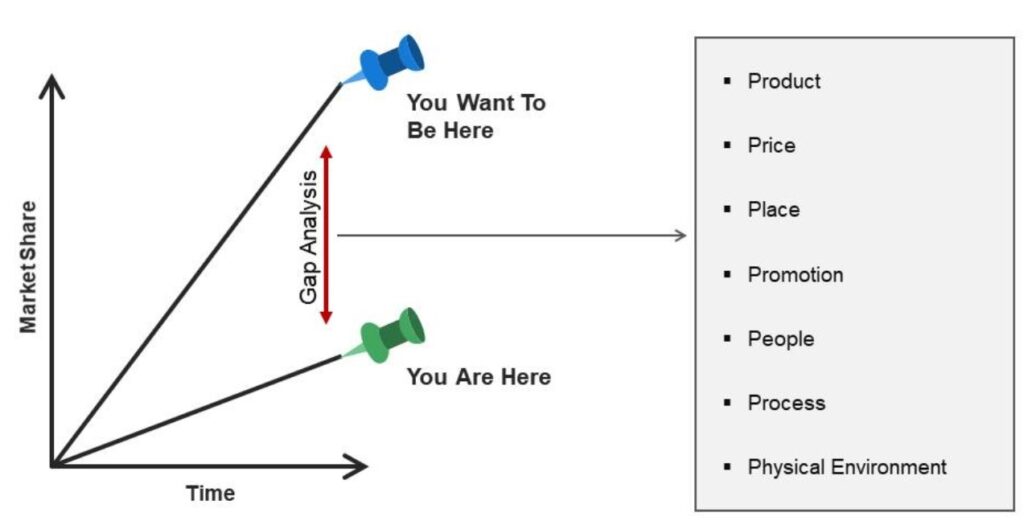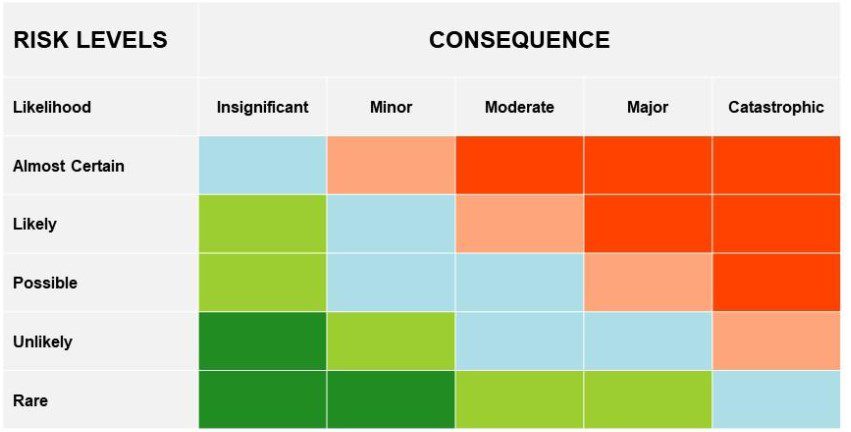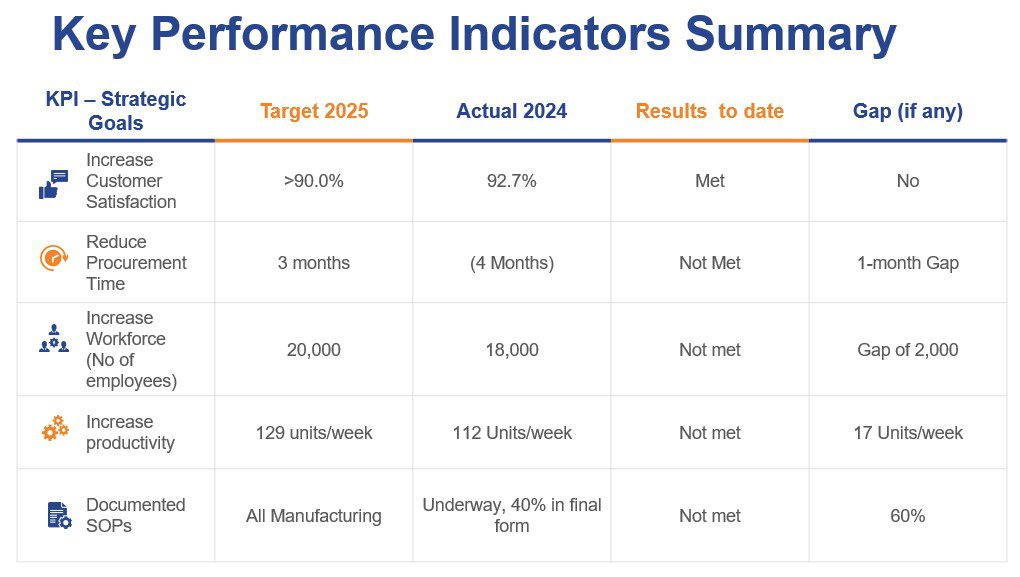Gap Analysis is a strategic tool we use to identify discrepancies between the current state of a process, product, service or organization against the future desired state. Ideally, gap analysis helps you understand the root causes and why they exist. Once the root causes are known; you are on your way to solving them!
We utilize gap analysis as part of our process to solving typical business challenges like poor performance, low productivity, regulatory non-compliance, skill gaps, customer dissatisfaction, technology issues, poor quality, and wasted resources (time and materials).
Once you know your current state and desired future state, be sure that your stakeholders are aligned on where you are going. If they are not aligned, you might be wasting your time on determining how to get to a place that doesn’t ultimately serve the business and will not be supported or sustained long term.

Once you have alignment on the future state, here are some key questions to begin the process for gap analysis:
1. What are the key gaps between your current state and your desired future state? People will often assume what the cause is of the most obvious gaps, without understanding why they truly exist. There are several ways to get a true picture of the root causes.
2. Why do the root causes exist? They are not often transparent and may require some work to get to the bottom of them. For example, you may have system issues that continue to plague decision making due to inaccuracies, timeliness, access etc. This could be from a few factors – lack of inhouse technology expertise, legacy systems that don’t integrate with others, lack of time, lack of direction, lack of financial resources to correct issues, lack of opportunity to implement changes or a combination of several. Listening to your stakeholders including users, assessing processes and defining pain points and the interdependencies between inputs and outputs will provide a bigger picture and highlight what is causing the key fundamental gaps.
3. Which gaps are the most critical? You will need to prioritize which gaps need immediate attention based on their impact in achieving your goals. Look for gaps that if addressed early will provide the maximum benefits. Create a matrix and place the known ‘gaps’ into a category from Maximum Benefit/Low Cost being the ultimate ones to address first and Low Benefit/High Cost being the least important = low priority.
4. What will be the impact if these gaps are not addressed? Assess the risks if you change nothing vs the benefits of addressing necessary changes now? This will help with your business case where resources (people, systems, funding) are required to support any change.

5. What quick strategies or actions can be taken now to bridge some of these gaps? Identify some quick wins that are possible to employ now as this will go a long way to gaining buy in and the momentum for change when people start to experience early improvements.
6. What changes in processes, systems, or structures will be required that will take longer to implement due to resource limitations, or other priorities for the business, like peak periods, competing priorities, etc. This information will help you to lay out a roadmap that works for your specific business and one that is also achievable.
7. What resources will you need to implement these changes? Do you have the internal capabilities to carry this work out or will you need external support? Do you have the budget to support the required changes?
8. Who will be responsible for implementing these changes? Are they aligned with the project outcomes? Do they have the bandwidth and capability to take this on?
9. How will you track progress and measure success? Can you use existing systems, or can you modify them to suit your needs? Do these systems currently provide accurate and timely data? How long will it take to implement technology supports or build a tool?
10. What key performance indicators (KPIs) will you use to evaluate success? Who should be involved in the KPI development so that everyone is working on achieving the same goals? If you are in a competitive industry, have you looked at industry benchmarks to determine if your future state targets are both achievable and impactful? Below is an example of a KPI chart showing metrics and performance at a high level.

By adopting a thorough and planful approach, you can ensure your gap analysis exercise looks beyond the superficial differences, so that you can address the fundamental issues that are holding you back from getting to your future state. From there, the real work begins!
We understand the process from defining the future state to identifying what’s in the way, the solutions required to close the gaps and how to implement solutions for sustainable change. Our business consulting services help you advance your objectives and results by employing our experience, the right skills and a team who is focused on delivering an exceptional consulting experience – each and every time. If you are ready to explore how we can further your initiative, reach out for a quick call to discuss where you are and where you want to be.